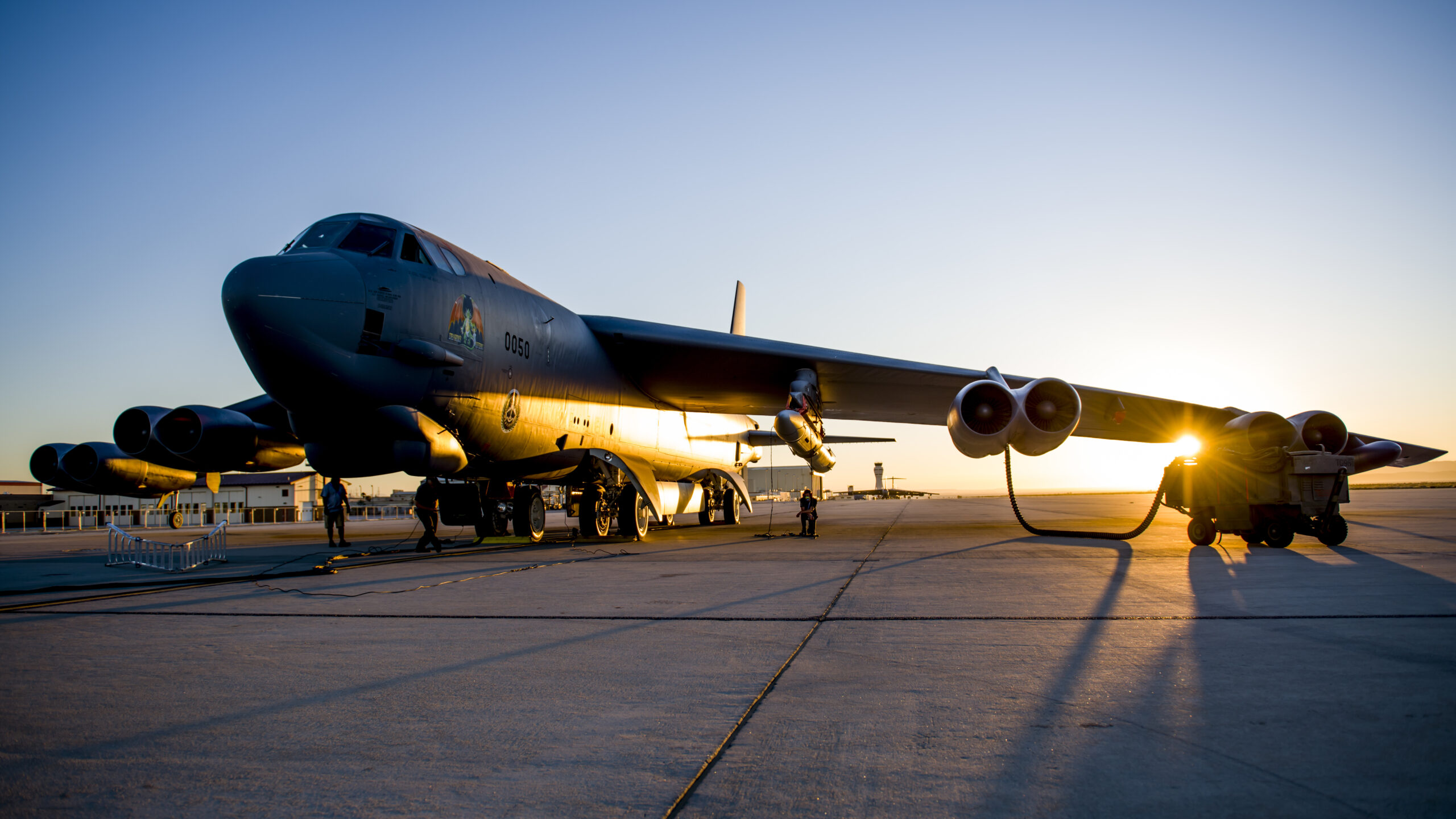
A B-52H Stratofortress gets ready to conduct a captive-carry flight test of the AGM-183A Air-launched Rapid Response Weapon at the Point Mugu Sea Range off the Southern California coast. (Air Force/Giancarlo Casem)
WASHINGTON: The US Air Force has successfully launched the AGM-183A Air-launched Rapid Response Weapon from an aircraft for the first time, potentially paving the way for it to become the service’s first operational hypersonic missile.
During the test, which took place May 14 off the coast of southern California, a B-52 bomber successfully released the ARRW missile. The Air Force stated that the ARRW booster “ignited and burned for [the] expected duration, achieving hypersonic speeds five times greater than the speed of sound.”
The road to a successful test launch hasn’t been easy for the ARRW program. Last year, the program suffered three consecutive failed booster tests where the missile failed to separate from the aircraft, most recently in December 2021.
“This was a major accomplishment by the ARRW team, for the weapons enterprise, and our Air Force,” said Brig. Gen. Heath Collins, the Air Force’s program executive for weapons. “The team’s tenacity, expertise, and commitment were key in overcoming the past year’s challenges to get us to the recent success. We are ready to build on what we’ve learned and continue moving hypersonics forward.”
With a successful launch finally under its belt, the major looming question is whether (and when) the Air Force will approve production of ARRW, which was developed by Lockheed Martin. While the service previously had been bullish on the notion of procuring hypersonic weapons — with plans to begin production of ARRW in fiscal 2022 that were ultimately quashed by Congress — that changed when Air Force Secretary Frank Kendall took over last summer as the service’s top civilian.
Kendall has been skeptical of hypersonic weapons broadly, repeating at multiple venues that it would be financially and strategically unwise for the United States to match Russia and China, hypersonic missile for hypersonic missile.
Kendall’s ethos seemed to be felt in the FY23 budget release, which included plans to invest a mere $46.6 million in funding for ARRW, allowing the service to wrap up testing before deciding whether to proceed with a program of record.
“ARRW, I think you know, has had a series of test failures,” Kendall told lawmakers at a Senate Armed Services Committee hearing earlier this month. “We have to have success before we can move forward to production. There are, I think, two tests that are planned over the next several months. That will give us a better indication of where we are in the program.”
Aside from being capable of flying at extremely high speeds, hypersonic weapons are more maneuverable in flight than legacy missiles, making them more difficult to shoot down. For the Air Force, having a capability like ARRW in the arsenal allows the service to keep older, less survivable platforms like B-52 at standoff distances while still being able to strike at enemies with a weapon that is more difficult to defend against.
The 419th Flight Test Squadron from Edwards Air Force Base, Calif., performed the most recent ARRW test. “We’re doing everything we can to get this game-changing weapon to the warfighter as soon as possible,” said Global Power Bomber Combined Test
Force Director Michael Jungquist.
Norway’s air defense priorities: Volume first, then long-range capabilities
“We need to increase spending in simple systems that we need a huge volume of that can, basically, counter very low-tech drones that could pose a threat,” Norway’s top officer told Breaking Defense, “so we don’t end up using the most sophisticated missile systems against something that is very cheap to buy.”


























